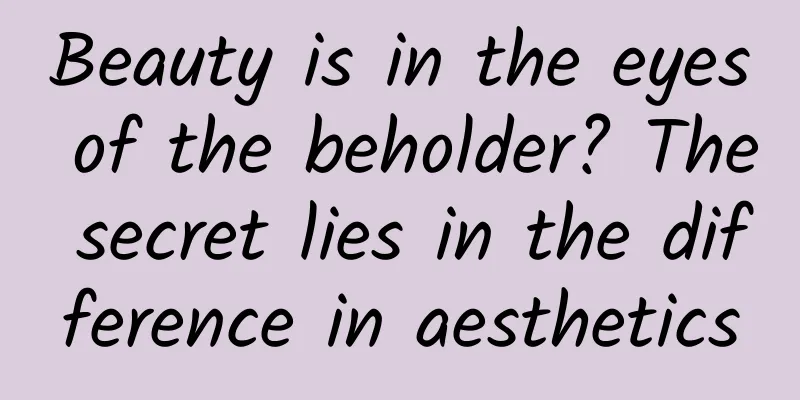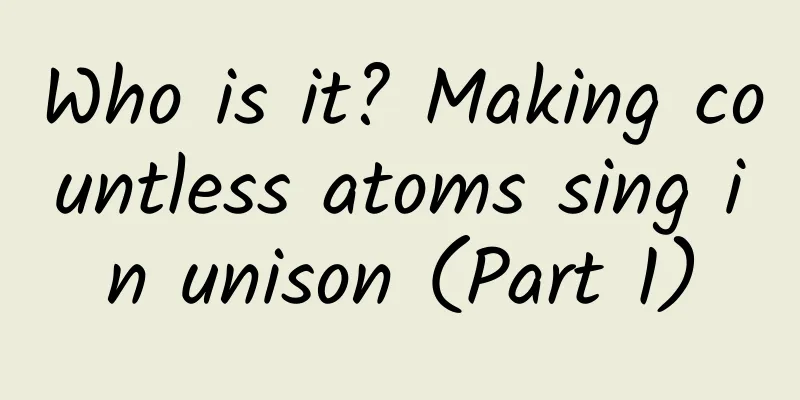Beauty is in the eyes of the beholder? The secret lies in the difference in aesthetics

|
We often say "Beauty is in the eyes of the beholder". At first glance, this sentence may sound a bit idealistic, but life experience seems to prove that this proverb is quite accurate. We often have this experience: we tend to rate our loved one’s appearance higher than others, and he or she seems to be good in every way, as if our eyes automatically add a layer of filter to them. I remember seeing a joke like this: I bumped into my ex-boyfriend on the street and suddenly thought he was so ugly. I chatted with my bestie and asked him why he was so ugly. I remembered he was handsome before! My bestie laughed and said, "He was not handsome before, you loved him before." The psychological basis of “Beauty is in the eyes of the beholder” – the halo effect Psychologists have given some explanation for the saying "beauty is in the eyes of the beholder", believing that this is the result of the halo effect. The so-called halo effect, also known as the "halo effect", means that when you have a good impression of a person or certain traits, it will be difficult for you to feel his other shortcomings. Psychologically, you believe that he must be good in other aspects as well. You have all kinds of "positive fantasies" about him, as if there is a halo surrounding him, and all his shortcomings are hidden under the halo and cannot be seen at all. Researchers have confirmed through a study of 70 couples that in the eyes of both partners, their partners are more beautiful than they actually are. The halo effect can make us like people we like more, and similarly, it can make us dislike people we dislike more, all depending on our likes and dislikes. The physical basis of the saying “Beauty is in the eyes of the beholder”: eyes have their own “Photoshop” Psychologists say so, while physicists provide more direct evidence. They found that when humans see something they like very much, their pupils will dilate more than normal, and too much light will be projected onto the retina, affecting the accuracy of vision. The result is that the image is blurred and cannot provide a clear visual effect, just like the effect of PS. Our eyes will PS the face of the person we like to a satisfactory degree before projecting the information to the brain, and for the person we hate, we will also portray him as more ugly. "Beauty is in the eyes of the beholder" means that for the same person, when judging the appearance of a person he is familiar with and a person he is not familiar with, his judgment criteria are different. So how do different people judge the appearance of the same person? It seems that the difference is also very large. We often have this experience: people who we think are very beautiful are often considered average by others, and sometimes people who we think are just passers-by become male gods or goddesses in the eyes of others. This is the difference in aesthetics. Once, an American girl sent her makeup-free photos to photo retouchers from various countries, hoping to photoshop her into the beauty in their minds. As a result, photo retouchers from different countries enthusiastically showed what they thought a beauty looked like. They all had different aesthetic characteristics for skin color, makeup, and facial features, which seemed to prove that aesthetic differences widely exist. Human aesthetics have differences and commonalities: guided by genes However, we also found that although people's perceptions of appearance vary, characteristics such as fair skin, thick eyebrows, big eyes, pure red teeth, etc. are signs of beauty in the eyes of most people. This shows that there are commonalities and differences in aesthetics. Some scientists estimate that an individual's aesthetic preferences for faces are 50% the same as others and 50% different. So how do scientists explain this different perception of aesthetics? Some scientists believe that human aesthetic activities are guided by certain genes. When men choose a mate, they often prefer young and beautiful women with voluptuous figures, while women tend to prefer tall men with three-dimensional features. The reason for this preference is that such a partner is often healthier, has stronger fertility, and can more likely ensure the survival of their genes. This is called "gene selfishness." The so-called selfishness of genes refers to the fact that they will induce people to take actions to ensure the reproduction of their own genes. Therefore, it can be inferred that people's aesthetic psychology mechanism is evolved from human beings living in a long-term natural environment, and its ultimate goal is to preserve and reproduce human genes. Personal aesthetic differences are mainly determined by one's own experience Under the influence of genes, people have developed some common aesthetic tendencies, but as mentioned earlier, there are still great differences in aesthetics between people. Scientists from the United States have found that people's aesthetics are largely determined by their past personal experiences. In this study, 35,000 netizens evaluated the faces of 50 different men and women and rated their attractiveness. Through a detailed investigation of the participants, the researchers concluded that the uniqueness of individual aesthetics is mainly due to their own experiences, not genes. They then conducted a study on 547 pairs of identical twins and 214 pairs of fraternal twins. In the attractiveness ratings of 200 different faces, identical twins and fraternal twins did not show significant differences, and even identical twins with nearly 100% of the same DNA would not be attracted to the same people. This is enough to prove that genes are not the determining factor in aesthetic differences, and personal experience is often more important. Literary people say that your eyes today reflect the roads you have walked and the people you have loved. Scientists say that the roads you have walked determine the kind of people you will fall in love with. I just want to say, thank God, aesthetic differences do exist, otherwise, wouldn't short and fat people have no market? References Ying Shuyue, the potential “genetic guidance” in aesthetic activities Laura Germine et al., Individual aesthetic preferences for faces are shaped mostly by environments, not genes |
<<: After revenge, I was "revengeful", the unbearable "weight of eating raw seafood"
>>: Trivia | What can you use to ward off vampires? Garlic?
Recommend
It's time to show real skills. A fake fan's experience of the Hong Kong version of PS4 "FIFA 16"
The 2014 Brazil World Cup has long gone, but the ...
How to write a 99-point event planning proposal?
If you give a campaign plan 100 points, then toda...
91 Ten Articles: China's car exports to Australia soared, Skyworth said it would invest another 30 billion to build cars
1. Changan Automobile plans to increase its layou...
Michelangelo's paintings actually contain the secrets of AI painting? !
With the popularity of AIGC (artificial intellige...
Summary of special events in major Android markets in March (registration in progress)
Millet [March traffic event] Registration is open...
What is the paid search effect? Here are four revelations for corporate promotion
"I know that half of my advertising expenses...
Programmers, after seeing the salary of Apple interns, don’t you want to quit?
[[138183]] Can you imagine how it feels to just l...
Are sun-protective clothing that costs thousands of dollars just a waste of money?
People who love beauty should of course pay atten...
User growth: How to establish a user perspective?
What is the user perspective? This is actually a ...
What are the essential elements of high-quality creativity? On the importance of a high-quality creative idea in bidding promotion
What should we do if we encounter the above situa...
Cheap PCs will gradually disappear due to the pressure from smartphones and tablets
Netbooks fueled a PC buying frenzy in 2008, as hu...
Android 14 Beta 4 update released, Pixel phone/Fold/Tablet can be downloaded
On July 12, Google pushed the Android 14 Beta 4 v...
Will Super App + Web App dominate the future of mobile Internet?
[[125521]] Since W3C released HTML4 in 1999, the ...
Fallout 4 system requirements announced: R9 290X/GTX 780 graphics card recommended
Many years after Fallout 3, Bethesda finally anno...









